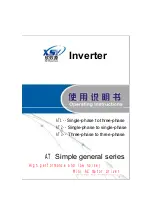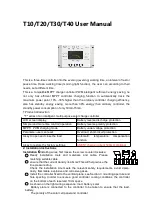
MI00102 -E
4
ENGLISH - 3/8
Installation rules
This module has been designed for assembly on a DIN 46277 rail. Assembly in vertical
position is recommended in order to increase the module's ventilation, and no raceways or
other objects that compromise aeration must be positioned in the vicinity.
Do not position the module above equipment that generates heat; we recommend
positioning the module in the lower part of the control panel or container compartment.
We recommend rail-type assembly using the corresponding bus connector (Code K-BUS)
that eliminates the need to connect the power supply to each module.
1 - Attach the module in the upper part of
the rail.
2 - Press the module downwards.
1 - Apply leverage using a screwdriver (as
shown in the figure).
2 - Rotate the module upwards.
Inserting the module in the rail
Removing the module from the rail
Using the K-BUS connector
1 - Compose the K-BUS connectors as required in order to obtain the number of positions
necessary (each K-BUS permits the insertion of no. 2 modules).
2 - Insert the K-BUS connectors in the rail by positioning them on the upper side of the rail
and then rotating them downwards.
s
IMPORTANT: Pay particular attention to the po ition of the protrudent terminals of the
K-BUS. The K-bus must be inserted in the guide with the protrudent terminals on the left
(as shown in the figure) otherwise the modules are turned upside downs.
- Never connect the power supply directly to the bus connector on the DIN
rail.
- Never tap power supply from the bus connector either directly or by using
the module's terminals.
!
K
1
0
9
S
0
1
SW
1
SW
2
L
o
a
d
: Ri
5
0
0
/ R
v
2
k
£
W
³
W
T
e
s
t V
o
ltag
e
: 1.5
k
V
, 5
0
H
z, 1
m
in
A
m
b
. T
e
m
p
. : -2
0
..+
6
5
°C
I
K109S
0
1
SW1
SW2
Load : Ri
Rv
£
500
2
k
W
/
³
W
est
V
oltag
: 1.5 kV
, 50 Hz, 1 min
T
e
mb.
T
emp. : -20..+65 °C
A
V
I


























